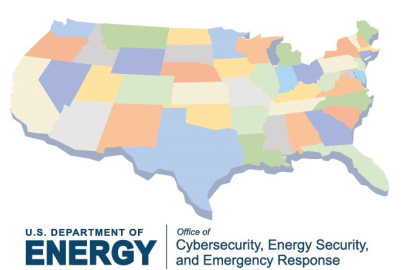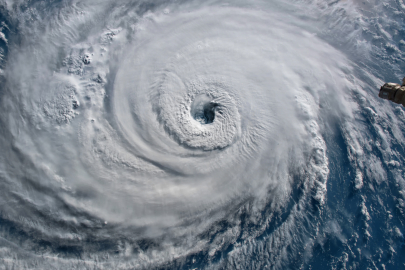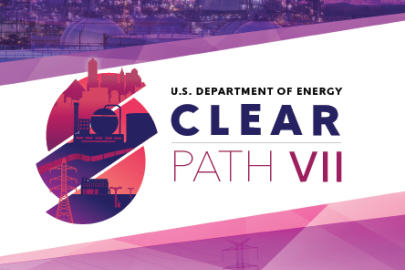CESER’s SLTT Program enhances energy security capabilities, advances emergency preparedness, and strengthens the coordination of response and recovery across all natural and manmade hazards. SLTT governments play a critical role in energy security planning and emergency response. These governments have operational, tactical and policy development roles & responsibilities that can have a wide-reaching impact beyond the energy sector. Supporting SLTT advancement results in a more secure and resilient energy sector that is able to better prevent, mitigate, withstand, respond, and recover from disruptions. CESER encourages energy security planning that is risk-based, operationally focused, and cross-jurisdictional and seeks to build SLTT capacity to serve national security interests for cybersecurity, energy security, and emergency response.
CESER supports Governors and their energy advisors, state energy office directors and staff, public utility commissioners and staff, state legislators, emergency managers, and public power owners and operators through collaboration with partner organizations, including the American Public Power Association (APPA), the National Association of Regulatory Utility Commissioners (NARUC), the National Association of State Energy Officials (NASEO), the National Conference of State Legislatures (NCSL), the National Emergency Management Association (NEMA), and the National Governors Association (NGA). CESER also engages directly with state governments to provide technical support and coordinate emergency response efforts.
CESER enhances SLTT preparedness and response efforts to all hazards, including cyber, through a suite of analytical tools, progressive trainings, webinars, as well as by participating in national/regional conferences, workshops, and exercises. These resources and technical assistance advance SLTT energy security planning, risk awareness, policy and investment decisions, and mitigation strategies. Below are some key tools CESER offers to enhance SLTT efforts.
State Risk Profiles
CESER developed State and Regional Energy Risk Profiles that examine the relative magnitude of risks at a regional and state level, highlighting energy infrastructure trends and impacts. The profiles present both natural and man-made hazards with the potential to cause disruption of the electric, petroleum, and natural gas infrastructures. An understanding of risks and hazards within the energy infrastructure enables states to better prepare for potential disruptions. States can use the profiles to inform decisions about their investments, resilience and hardening strategies, and asset management.
SLTT Program Resource Library
CESER’s SLTT Library is a one-stop-shop for CESER’s comprehensive suite of SLTT partner tools, trainings, guides and resources. A repository of easily sortable information, the library provides resources to advance and inform state, local, tribal and territorial government’s energy security planning, risk awareness, policy and investment decisions, mitigation strategies and emergency response efforts.
EEAC Program
The Energy Emergency Assurance Coordinators (EEAC) program is a cooperative effort between DOE CESER, and NASEO, NARUC, NGA and NEMA, to help the Federal Government and States work together to provide a unified response to energy emergencies. The EEAC program enables bi-directional communication and information sharing prior to and during energy disruptions and emergencies.
States designate government representatives to be Energy Emergency Assurance Coordinators. Typically these individuals are from state energy offices, public utility commissions, emergency management agencies, or Governors’ offices and hold responsibilities for Emergency Support Function #12 – Energy (ESF – 12), energy emergency response, steady-state monitoring of the energy sector and/or are subject matter experts on electricity, natural gas, petroleum, etc.
Energy Emergency Assurance Coordinators are the points of contact DOE and other states will use to share information during events that disrupt energy supplies or to communicate important emergency notices. States are responsible for maintaining and updating EEAC contacts through ISERnet. To register for an account or update state contacts, please click here.
Additional Resources
-
 DOE's Resource Hub contains guidance and template resources for state energy officials developing their energy security planning programs.
DOE's Resource Hub contains guidance and template resources for state energy officials developing their energy security planning programs. -
 The playbook provides states and territories with a framework, guidance and templates to aid in the development of their response plans.
The playbook provides states and territories with a framework, guidance and templates to aid in the development of their response plans. -
Events and activities undertaken by DOE CESER's State, Local, Tribal and Territorial (SLTT) Program in 2021.
-
Learn about the key types of emergency regulatory relief available for energy response and recovery efforts.
-
 Learn more about the Department's emergency response efforts during the winter.
Learn more about the Department's emergency response efforts during the winter. -
 Learn more about the Department's emergency response efforts during the Atlantic hurricane season.
Learn more about the Department's emergency response efforts during the Atlantic hurricane season. -
EAGLE-I™ is an interactive geographic information system (GIS) that allows users to view and map the nation's energy infrastructure
-
 In early May, CESER conducted its seventh iteration of the ClearPath exercise series.
In early May, CESER conducted its seventh iteration of the ClearPath exercise series.

